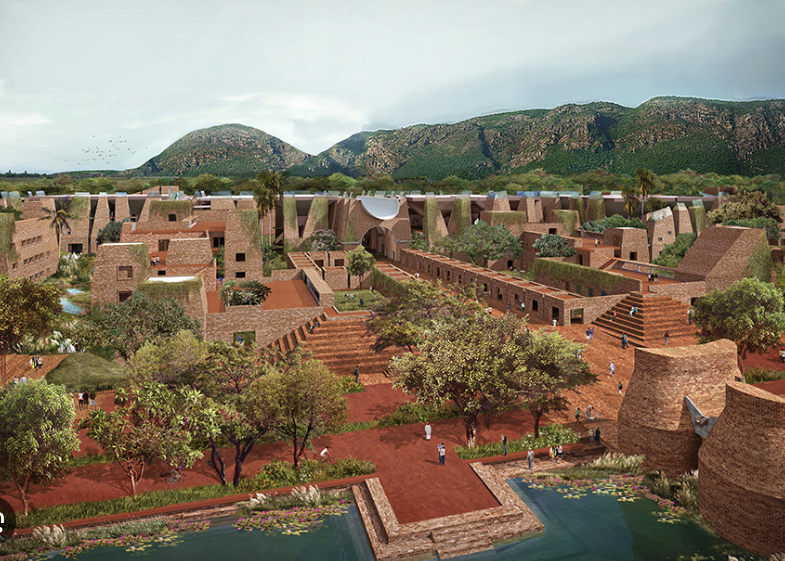Discover the rich history of Nalanda University and its profound impact on ancient India. Explore its origins, scholars, and more.
Nalanda University is a repository of knowledge and a reminder of antiquity in the center of India’s historical landscape. This historic center of learning, which is tucked away in Bihar’s lush plains, has long been veiled in mystery and intrigue. Join us as we explore the mysterious past and present of Nalanda University, where centuries of learning have forever altered the course of human history.
The History of Nalanda University
Nalanda University was founded in the fifth century CE and is frequently referred to as the “Oxford of the East.” It was once a monastic institution for Buddhist study when it was founded during the rule of the Gupta Empire. The university’s tranquil location amidst a verdant landscape cultivated a milieu that encouraged reflection and intellectual development.
In order to recreate the historic institution of Nalanda, which operated between the fifth and thirteenth centuries, Nalanda institution was founded. A resolution to revive Nalanda University was approved by the 16 participating nations during the 2nd East Asia Summit in 2007. At the 4th East Asia Summit in 2009, ASEAN members Australia, China, Korea, Singapore, and Japan pledged more help. The university received land for its new campus from the Bihar State Government, which had purchased it from locals. Nitish Kumar, the chief minister of Bihar, also met with SM Krishna, the minister of external affairs, to get assurances that the federal government will provide enough funding for the project.

A global competition was used to select the architectural concept. The Pritzker Prize-winning architect BV Doshi’s company, Vastu Shilpa Consultants, was selected as the competition’s winner by the jury, which included Liu Thai Ker.The triple net zero energy, water, and waste strategy plan is provided by the company dbHMS. The project’s original ideas included “advancing the concept of an Asian community…and rediscovering old relationships.” and “serving as a bridge for students in various Southeast Asian countries”
The university has been envisioned as an outstanding, internationally recognized university. On September 1st, 2014, the School of Historical Studies and the School of Ecology and Environmental Studies welcomed their inaugural group of 15 students. The first hostel was located at a hotel run by the Bihar State Tourism Development Corporation in Rajgir. A contemporary campus of more than 160 hectares (400 acres) was first set up with temporary structures near Rajgir, and more than 80 percent of it will be finished by 2021. In January 2020, the institution moved to its new 455-acre campus and began operations there. Similar to the original Nalanda, at least 200 communities near the institution will be affiliated with it.

ALSO READ: Nalanda University In G20 2023: A Testament To India’s Intellectual Heritage.
The Legendary Scholars of Nalanda University
Some of the greatest thinkers in ancient history honored Nalanda with their presence. Scholars like Nagarjuna, Aryabhata, and Dharmapala were among these eminent figures; they made ground-breaking advances in a variety of disciplines, including astronomy, mathematics, and philosophy. The university served as a creative melting pot for students and faculty from all around Asia.

A Remarkable Curriculum
The extensive curriculum of Nalanda was one of the secrets to its long legacy. It covered a broad range of topics, including as theology, astronomy, language, logic, and medicine. In addition to imparting knowledge, the syllabus was created to instill moral values.

The Library of Alexandria of the East
The great library at Nalanda was arguably its most impressive feature. Numerous scrolls, manuscripts, and books from various civilizations are thought to have been stored there. The library attracted intellectuals and seekers from far-off regions since it was not just a storehouse of knowledge but also a beacon of illumination.
The Decline and Rebirth
Despite having a distinguished past, Nalanda University experienced a turbulent era of collapse, which was primarily brought on by invasions and political unrest. The once-vibrant center of learning was destroyed. But its spirit persisted.
Attempts have been undertaken in recent years to revive Nalanda as a cutting-edge center of learning. The Nalanda University that exists now is proof of knowledge’s tenacity and the enduring influence of its historic past.

Modern Nalanda University
In 2010, Nalanda University started its transformation into a cutting-edge academic institution. The modern university aspires to embrace the principles of its historic forebear while adjusting to the needs of the twenty-first century. It provides a variety of educational opportunities in the humanities, social sciences, and natural sciences.

Exploring Nalanda Today
Today’s visit to Nalanda presents a rare synthesis of historic legacy and cutting-edge scholarship. The magnificence and historical relevance of the old university’s archaeological ruins never cease to mesmerize tourists. While this is happening, the contemporary campus is alive with the enthusiasm of students from many backgrounds pursuing their academic goals.
To Know more about Nalanda University, Click Here.
Image source: Google




































